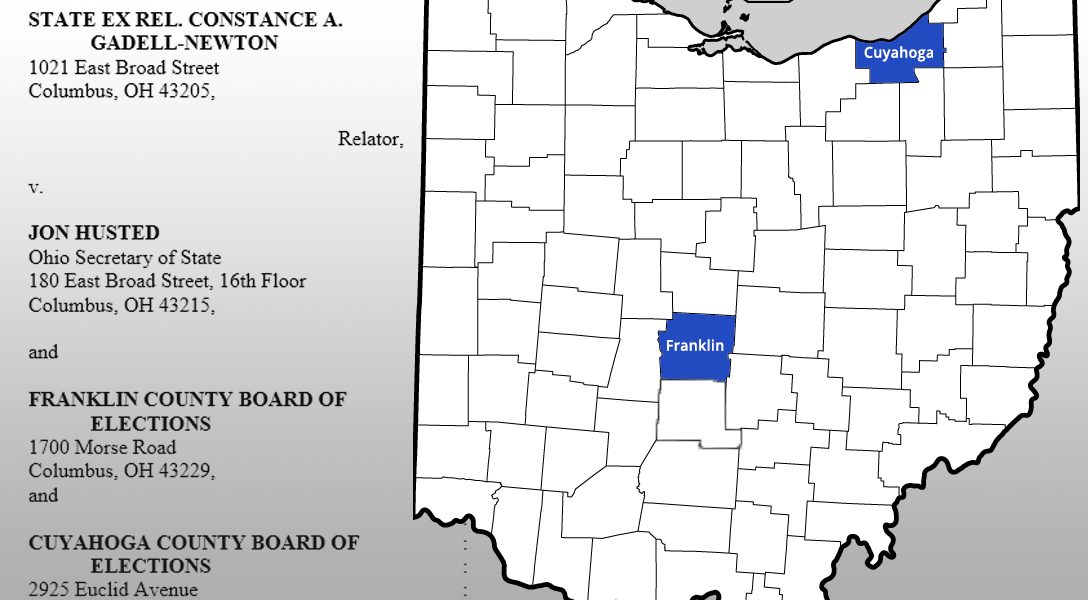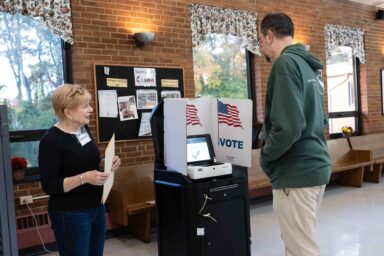The Ohio primaries are Tuesday, but two of its most populous counties are set to discard their electronic ballot images, which are used to count the votes. A lawsuit brought about by election transparency activists is trying to stop that from happening.
Electronic voting hasn’t guaranteed fairness in elections so far. But digital-scanning technology has the potential to increase transparency in elections — if election officials flip the right switches.
Digital scanners capture images of each paper ballot cast and use the images to count results. The machines can preserve the images, providing a quick and easy way to verify election results.
But the settings can be adjusted to discard the images after the results are tabulated. Some election officials are quick to defend their right to trash the ballot images, despite the fact that the machines count the images, not the paper ballots.
The latest contest over ballot image preservation is currently underway in Ohio, where the Green Party candidate for governor, Constance Gadell-Newton, filed an expedited lawsuit against Cuyahoga County, Franklin County, and Secretary of State Jon Husted (R).
The expedited lawsuit argues that Cuyahoga and Franklin counties, the two most populous in Ohio, will violate federal law when they destroy ballot images from tomorrow’s primary.
“You may have the original ballot, but that’s not what the machine counted: it counted the picture,” John Brakey, director of AUDIT-USA, a nonpartisan advocacy group involved in the Ohio case, told WhoWhatWhy. “How can you destroy the evidence that you used to count the votes?”
Ballot images, effectively digital photocopies of the original ballot, don’t take the place of a paper ballot, but rather offer an additional layer of verification. A recent case in New York determined that the images are public records under Freedom of Information laws, meaning that anyone can access and review the records.

“The public has a right to be able to see what’s happened in an election and be able to confirm that they should be able to trust [the outcome],” Lawrence Norden, Deputy Director of the Brennan Center for Justice’s Democracy Program, told WhoWhatWhy. “We should be doing everything we can to preserve and make available materials to people.”
In 2010, the Brennan Center was involved in litigation in the Bronx where, thanks to ballot images accessed through a FOIA request, they were able to determine that machines had been miscounting ballots due to a technical issue.
Over 20,000 votes were lost in the governor’s race alone.
Selective Leadership
.
The digital-scan voting machines in question can all preserve ballot images. Franklin and Cuyahoga counties have simply opted not to save them. According to Brakey and other activists, election officials in the county made clear their intent to destroy ballot images. It may be too late for some ballots already — in Ohio, precincts can start counting absentee and vote-by-mail ballots up to 19 days before an election.
The Cuyahoga Board of Elections declined to comment due to the ongoing litigation; Franklin County and the Secretary of State did not respond to multiple requests for comment.
Left up to the counties, election transparency differs widely across the state. Though supportive of a transition toward digital scanning equipment statewide — to replace the outdated direct-record electronic voting machines and optical scan technology in use in the majority of Ohio’s voting precincts — the state has neglected to issue any directive to preserve ballot images.
Elsewhere, though, Husted hasn’t hesitated to intervene in elections. The US Supreme Court reviewed a case last year that concerned a procedure in Ohio, which removes inactive voters from the rolls. The case is still pending.

“No one has shown more leadership in taking away votes,” Robert Fitrakis, attorney for the plaintiff in the case, told WhoWhatWhy. “But when it comes down to transparent elections, [Secretary Husted] finds that there is no state law that shows that he can send out a directive that tells people to turn on ballot image preservation.”
Old Equipment
.
Most voters in Ohio, though, rely on outdated machinery, such as direct-record electronic voting and optical scanners, that do not produce publicly verifiable records such as electronic ballot images. Optical scanners date back to the 1960s and use a technology called MarkSense that counts votes more quickly than by hand. But the machines don’t capture an actual image of the ballot — rather, they produce a “print out” with a barcode that can only be read by a computer programmed with potentially vulnerable software.
DREs, or touchscreen voting, were celebrated by some as a solution following the Florida recount scandal in the 2000 presidential election. But it didn’t take long for the vulnerability of the machines to become apparent. The machines produce no paper trail whatsoever; they rely entirely on software to record and tabulate election results. The weaknesses of the software have been exposed repeatedly.
“If you’re using DREs you might as well hang a sign out: ‘Fraud Invited,’” said Robert Fitrakis, the prosecuting attorney in the Ohio case, told WhoWhatWhy. “If you’re allowing private corporate entities to program your computers, the problems aren’t the Russians, it’s the companies using proprietary software to code your machines in non-transparent ways.”
And old equipment presents a slew of threats for election security and reliability. Many of the now decades-old voting machines run on software that is no longer vendor-supported, limiting the ability to respond to flaws or security breaches. In addition, voting machine companies no longer provide replacements for aging parts, noted Norden from the Brennan Center. While the threat of hacking is high, so is the risk that machines simply won’t work come election day.
“The way we deal with infrastructure is that we’re constantly making improvements and thinking about what needs to be upgraded,” said Norden. “It’s not like we wait for 12 years until it’s all falling apart and realize it’s time to replace everything.”
Given the multiple weaknesses and opacities within election infrastructure, the fight to preserve ballot images could be a milestone in building trust in the electoral process. With a system to verify and authenticate results through publicly accessible ballot images, public cynicism about elections might ebb.
Anything that can increase voter confidence in elections from the local to the federal level is worth it, said Brakey of AUDIT-USA. His organization plans to pursue ballot-image transparency on the local level for as long as it takes: “I’m trying to get more people involved in voting by proving that elections are real.”
Related front page panorama photo credit: Adapted by WhoWhatWhy from seal (William Creighton / Wikimedia) and flag (John Eisenmann / Wikimedia).



